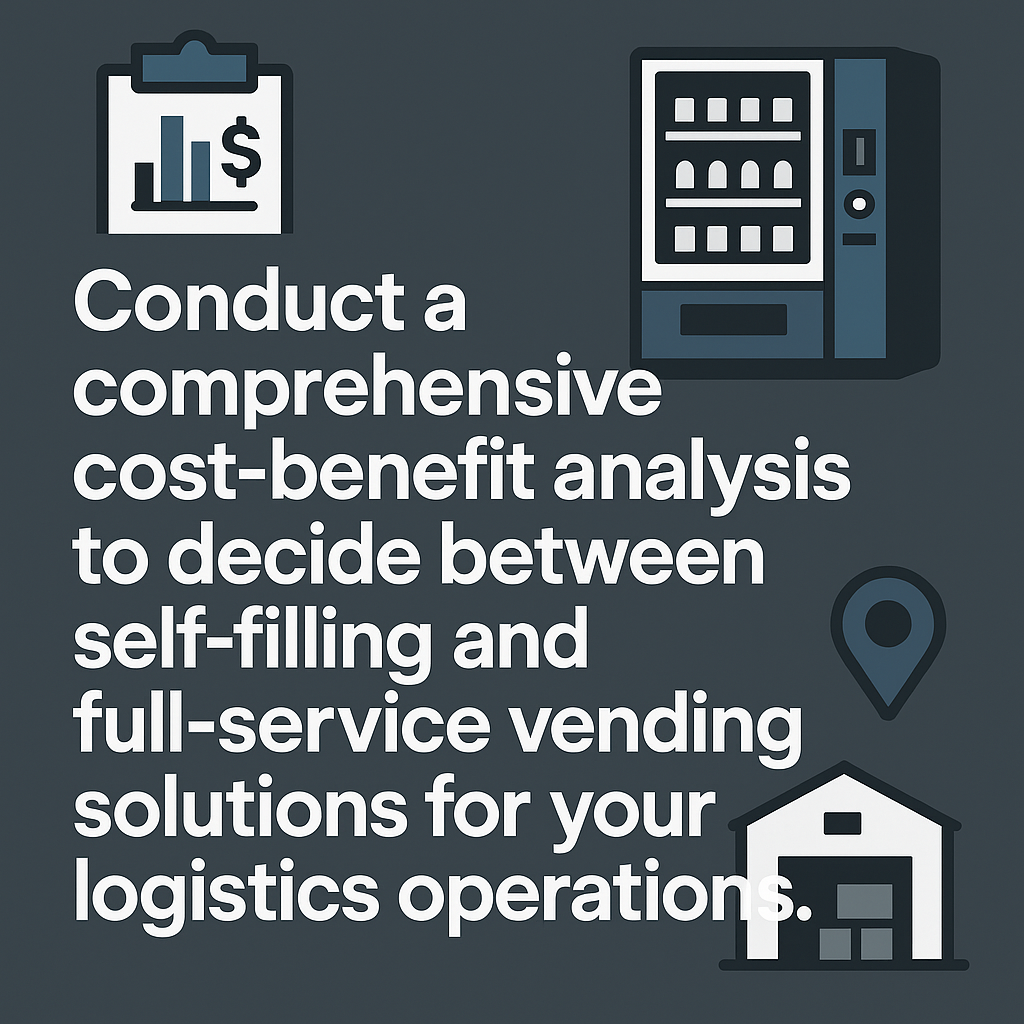For logistics hubs and distribution centers, providing easy access to refreshments and necessities for employees is paramount. The decision between a self-filling vending model and a full-service vending solution involves a detailed cost-benefit analysis. Both options present distinct advantages and disadvantages that influence operational efficiency, cost management, and employee satisfaction. Understanding these differences is key to making an informed choice for your facility.
The Self-Filling Vending Model: Internal Control and Responsibility
With a self-filling approach, the logistics company takes on all responsibilities associated with the vending machines. This includes purchasing the machines, sourcing products, managing inventory, restocking, handling cash, and performing all maintenance and repairs. The primary benefit here is the potential for higher profit margins, as all revenue generated from sales goes directly back to the company. However, this control comes at the cost of significant operational overhead. It requires dedicated staff time, capital investment in equipment and inventory, and the expertise to manage a vending operation efficiently. Businesses interested in managing their own vending might also explore resources on how to start a vending machine business, even if just for internal use.
The Full-Service Vending Model: Convenience and Expertise
In contrast, full-service vending eliminates the operational burden entirely. A vending operator installs, stocks, maintains, and services the machines at your logistics hub at no direct cost to your business. The operator handles product selection, inventory management, cash collection, and all necessary repairs. This model typically involves a commission-sharing agreement, where the logistics company receives a percentage of sales. The benefits of full-service are numerous: zero upfront investment, professional management ensuring optimal machine uptime, a wider variety of products tailored to employee preferences, and most importantly, freeing up your staff to focus on their core roles. This approach is similar to how many businesses consider what is a vending management company for broader needs.
Comparing Costs: Beyond the Sticker Price
When conducting a cost-benefit analysis, look beyond the initial price tag. For self-filling, factor in the depreciation of machines, the cost of labor for procurement, stocking, and maintenance specialists, utilities, potential product waste, and the hidden opportunity cost of distracting employees from their primary duties. For full-service, while there are no direct costs, consider the commission rate as a revenue opportunity. Analyzing these aspects can shed light on the true financial impact. To better understand potential revenue streams, exploring details such as revenue opportunities from logistics hub vending can be beneficial.
Impact on Employee Satisfaction and Productivity
Reliable and well-stocked vending machines contribute significantly to employee morale and productivity, especially in environments with demanding shifts. Full-service providers, with their expertise, often excel at keeping machines consistently stocked with popular items and responding quickly to service issues. This ensures employees always have access to refreshments, minimizing downtime. While self-filling can offer complete customization, ensuring consistent quality and availability across multiple machines can be challenging for a logistics company whose primary focus is not vending.

